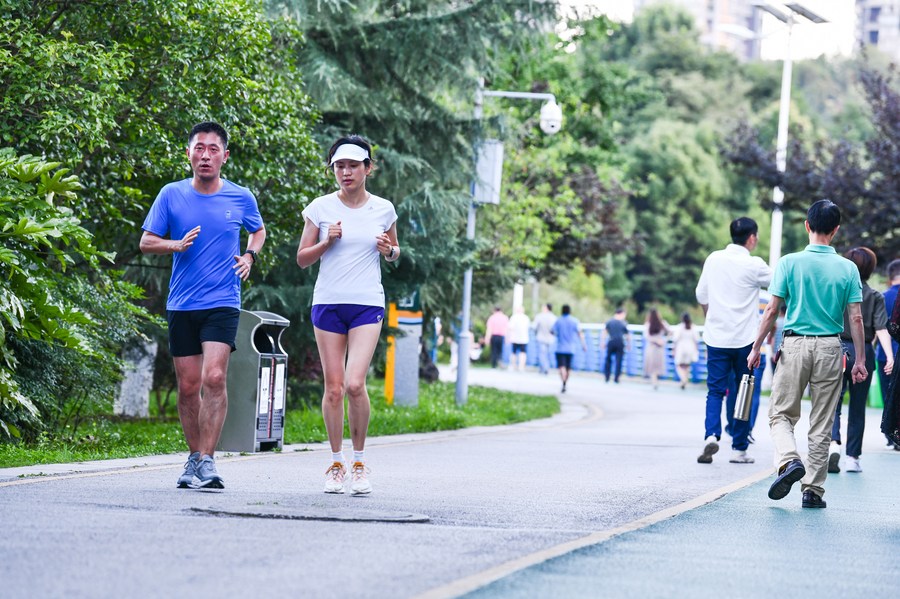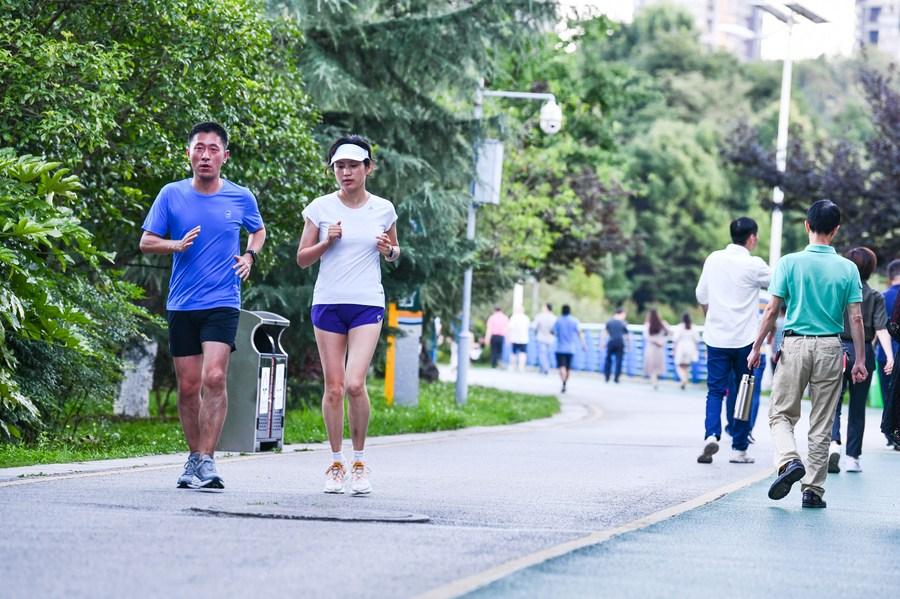
Citizens do physical exercise at Guanshanhu Park in Guiyang City, Guizhou Province, July 7, 2021. (Xinhua/Yang Wenbin)
BEIJING, Aug. 12 (Xinhua) -- As the Chinese people are encouraged to participate in physical activities, new trends of internet plus exercise are thriving in China, reported the Xinhua-run Economic Information Daily on Thursday.
-- Emerging types of gyms
New types of gyms allowing pay by the time and running around the clock have sprung up in recent years. For example, Lefit, an internet-based fitness platform founded in 2015 in Hangzhou, east China's Zhejiang province, launched convenience store-like gyms that have gained popularity among young people.
Lefit adopts online operation mode. Users can book courses such as fat loss and body sculpting and choose coaches online through Lefit app before going to the offline gyms.
This kind of intelligent management has helped Lefit save costs and increase operational efficiency, said Han Wei, founder of the platform.
In addition, Lefit gyms provide monthly, quarterly and annually payment services and run 24 hours per day to meet demands of different groups, thus becoming popular with users.
So far, Lefit has opened 754 fitness centers across China, with the cumulative number of users exceeding six million.
-- More fashionable exercise
Riding on the trend of national fitness, sectors such as innovative garment and intelligent wearable device have developed rapidly, making exercise more fashionable.
When developing new products, many garment enterprises are considering using antibacterial and deodorizing functional fabrics, increasing supportive points, designing decompression shoulder straps, ect. to meet consumers' workout needs.
Liu Huizhi, vice president of the clothing brand Aimer, said that the company, currently targeting running and yoga segments, is trying more sustainable, permeable materials with less friction by adopting big data and kinesiology analysis.
Smart wearable devices are also popular with the trend of sports. Sports bracelets recording heat consumption and smart spinning bikes are launched to meet personalized needs of home workouts.
Science and technology can empower sports, making physical activities more widespread and easier, said He Wenyi, secretary general and researcher with the national sports industry research base of Peking University.
-- Expanding circle of friends
For many people, exercise is not only a way of building up muscles, but also making friends. Online social platform-based sports have helped users expand circle of friends.
Due to the COVID-19 pandemic last year, some offline gyms faced declining turnover, forcing coaches to switch to online platform to share fitness knowledge.
Over the past year, over 23 million people have posted sports and exercise videos on Kaishou, one of the leading short-video sharing platforms in China, and over 20 million Kuaishou users followed live streaming fitness courses every day to complete their daily workout tasks.
A report unveiled by another Chinese short-video sharing platform Douyin, whose overseas version called TikTok, showed that 617 professional athletes have opened Douyin account to share their expertise, and 67.62 million videos recording ordinary people' highlighting exercise moments were uploaded.
The use of short-video sharing platforms also drives entrepreneurship. With increasing traffic and followers, some coaches have begun to sell fitness-related items via live streaming sessions, which doubled their revenue. (Edited by Su Dan with Xinhua Silk Road, sudan@xinhua.org)




 A single purchase
A single purchase









